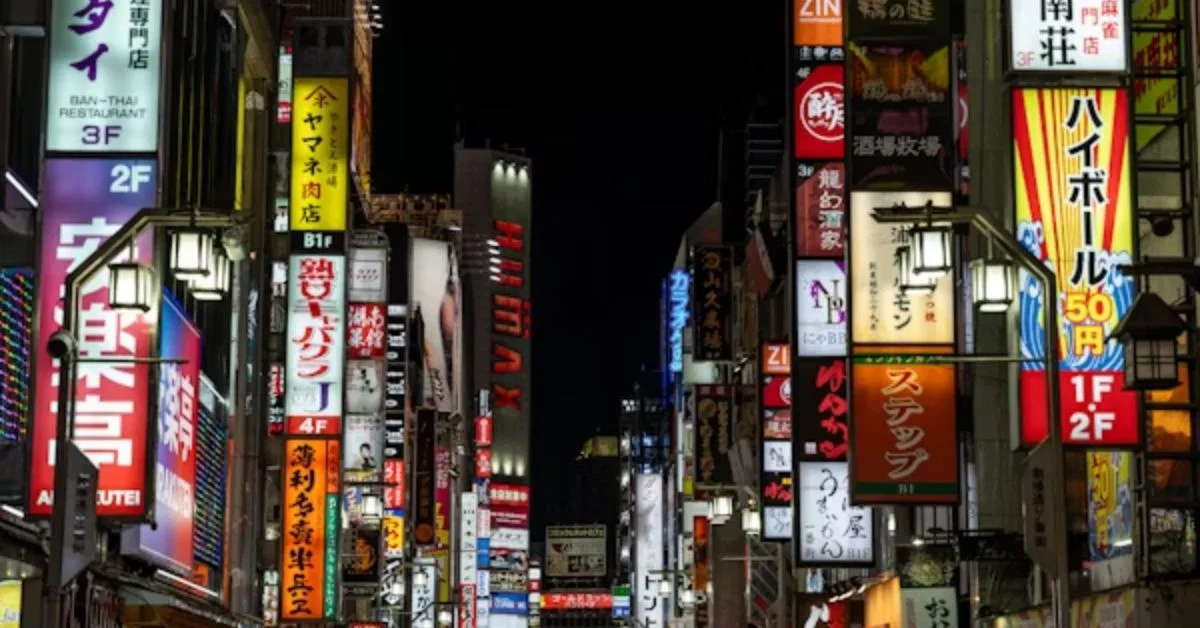In a city known for its kaleidoscope of culture, fashion, and futuristic technology, Tokyo’s linguistic landscape is evolving in ways few could have predicted. One term increasingly surfacing in academic circles, language schools, and even online communities is “Tokyo Mandarin.” While not officially recognized as a dialect, Tokyo Mandarin is quickly emerging as a hybrid communication form shaped by China’s growing influence in Japan, the fusion of business needs, and the realities of a globalized urban society.
In this article, we explore what Tokyo Mandarin is, how it developed, and why it matters in 2025—not only in Tokyo but in broader Asia-Pacific interactions. Whether you’re a linguist, a business traveler, or just a curious learner, understanding Tokyo- Mandarin provides fascinating insight into the intersection of language, migration, and identity in the modern world.
What is Tokyo Mandarin?
Tokyo Mandarin refers to an emerging sociolect—a blended form of Mandarin Chinese spoken with influences from Japanese structure, pronunciation, and cultural idioms. It’s not an official dialect, nor is it taught in schools as a standard language. Instead, Tokyo- Mandarin is a product of daily life, forged in multicultural neighborhoods, business environments, and interpersonal relationships where Mandarin speakers interact heavily with Japanese speakers.
Core Characteristics:
- Based on Standard Mandarin (Putonghua) but altered in tone and syntax
- Borrowings from Japanese grammar and honorifics
- Vocabulary adapted to fit Tokyo-centric concepts and contexts
- Frequently used in commerce, service industries, and mixed-ethnicity households
Importantly, Tokyo- Mandarin is not just “Mandarin spoken in Tokyo.” It represents a linguistic convergence—a cultural adaptation by native Mandarin speakers living in Tokyo who have modified their language for smoother integration and communication.
How Did Tokyo Mandarin Develop?
The rise of Tokyo- Mandarin can be traced through several overlapping trends:
1. Increased Chinese Immigration
By 2025, Chinese nationals make up the largest foreign demographic in Tokyo. From students and tech workers to entrepreneurs, their presence has reshaped Tokyo’s linguistic topography, particularly in districts like Ikebukuro, Takadanobaba, and parts of Shinjuku.
2. Bilingual Business Demand
As Japanese companies expand operations in China and Chinese firms establish Tokyo branches, bilingual proficiency has become a prized skill. Mandarin-speaking professionals adapt their speech to Japanese workplace norms—thus creating a hybrid form of Mandarin that feels more “Tokyo-appropriate.”
3. Language Apps and Technology
Language-learning apps and real-time translation devices now subtly reinforce the blend. Many tools train users on “functional fluency,” not linguistic purity, resulting in users adopting Tokyo-specific Mandarin expressions influenced by Japanese UI, context-based corrections, and simplified speech.
4. Media and Pop Culture
TV dramas, TikTok influencers, and YouTube creators in Tokyo now often feature Mandarin-Japanese bilingual content. Phrases like “你要不要吃便当?” (“Do you want a bento?”) reflect Mandarin phrasing wrapped in Japanese lifestyle vocabulary.
Key Linguistic Features of Tokyo Mandarin
Understanding the structure of Tokyo- Mandarin means examining how Mandarin Chinese is evolving under Tokyo’s social and linguistic pressures.
1. Vocabulary Blending
Words like:
- “便当 (biàndāng)” instead of “盒饭” (Chinese mainland term for boxed meal)
- “会社 (kaisha)” pronounced with Chinese phonetics but referring to “company”
- “便利店” sometimes replaced with “コンビニ” (konbini)
2. Grammar Adaptation
- Use of Japanese particles like “の” as a possessive in spoken Mandarin
- E.g., “我の家” instead of “我的家”
- Questions framed with Japanese syntax:
- “你是要去银座吗?” becomes “你要去银座か?”
3. Honorifics and Politeness
Mandarin does not traditionally include the levels of politeness found in Japanese. Tokyo Mandarin speakers often inject softeners and polite forms:
- Using “请” more frequently
- Ending requests with “好吗?” mimicking the Japanese “~desu ne?”
Who Speaks Tokyo Mandarin?
There’s no single profile of a Tokyo- Mandarin speaker, but generally, it includes:
- Chinese expatriates who have lived in Japan for multiple years
- Second-generation Chinese-Japanese children raised in bilingual homes
- Japanese nationals working with Chinese clients or firms
- International students navigating both linguistic spheres
- Bilingual service workers in tourism, food service, and tech support
What binds them is a need to communicate fluidly across cultural lines, often in real time and under social expectations unique to Japan.
Why Tokyo Mandarin Matters in 2025
The significance of Tokyo- Mandarin lies not just in its linguistic novelty, but in what it reveals about cultural adaptation, migration, and identity.
1. Bridging Economic Exchange
China and Japan, despite political tensions, remain deeply connected economically. Tokyo Mandarin provides a linguistic bridge for smoother collaboration in business, especially in small and medium enterprises (SMEs) that can’t always afford full translation departments.
2. Social Cohesion
As Tokyo becomes more diverse, a shared hybrid language like Tokyo Mandarin fosters belonging and reduces cultural friction. It helps Mandarin speakers feel at home without fully giving up their language identity.
3. Education and Language Policy
Language schools in Tokyo are now piloting “functional Mandarin-Japanese” curriculums that reflect Tokyo Mandarin usage. This opens new avenues for multilingual education, especially for children of mixed heritage.
4. Digital Linguistics
Tokyo Mandarin is being recognized by AI training models, voice assistants, and translation apps as a real-world usage pattern. Companies building speech recognition systems are now training on Tokyo-specific Mandarin accents and syntax blends.
Cultural Expressions and Media Adoption
In 2025, Tokyo Mandarin is influencing creative industries. Music, web comics, and vlogs are increasingly bilingual. Phrases unique to Tokyo Mandarin are being memed, like:
- “我今天超忙的哟~” — Mixing Chinese syntax with Japanese kawaii-style exclamation
- “可以给我那个味增汤吗?” — A blend of Mandarin request form and Japanese vocabulary
This playful fusion has sparked interest from linguists, artists, and Gen Z influencers, making Tokyo Mandarin not just a tool for communication, but a medium of self-expression.
Challenges and Criticism
Despite its usefulness, Tokyo Mandarin is not without challenges:
- Purists from both languages sometimes dismiss it as “broken Mandarin” or “lazy Japanese”
- Lack of standardization makes it hard to teach or assess
- In formal settings, it may be viewed as unprofessional or unclear
- Native Mandarin speakers may struggle with adapting to the altered cadence and tone patterns
Nonetheless, Tokyo Mandarin reflects a broader reality: language is not static, and in multilingual cities, new forms will always emerge.
The Future of Tokyo Mandarin
Linguistic experts believe that if current trends continue, Tokyo Mandarin may evolve into a recognized dialect within the next decade. Already, some Tokyo-based companies have internal guides for “Mandarin for Japanese Clients,” based on real-world Tokyo Mandarin use.
Educational institutions in Japan and China are also collaborating on cross-linguistic curriculum development, preparing students for a world where language boundaries are porous.
Moreover, as Japan continues to soften immigration restrictions and attract international talent, hybrid dialects like Tokyo Mandarin will likely play a greater role in interpersonal and institutional communication.
Conclusion
Tokyo Mandarin is not merely a quirky blend of languages—it is a living linguistic phenomenon, born out of necessity, shaped by culture, and matured through daily interaction. It illustrates how languages evolve in response to economic ties, migration, education, and pop culture. In 2025, as Tokyo cements its role as a global city, the voices heard on its streets reflect not just Japanese or Chinese identities, but something new and shared.
Understanding Tokyo Mandarin is not only about appreciating how people speak, but also why they speak that way: to belong, to be understood, and to thrive in a city that’s always looking forward.
FAQs
1. Is Tokyo Mandarin an official language?
No, Tokyo Mandarin is not officially recognized. It is an informal, hybrid language pattern spoken by Mandarin speakers adapting to life in Tokyo.
2. How is Tokyo Mandarin different from regular Mandarin?
Tokyo Mandarin incorporates Japanese grammar, vocabulary, and politeness structures, resulting in a hybrid that differs from standard Mandarin.
3. Where is Tokyo Mandarin most commonly used?
You’ll find it in multicultural neighborhoods, bilingual workplaces, international schools, and social media content originating from Tokyo.
4. Can I learn Tokyo Mandarin in language schools?
Some Tokyo-based language programs now offer “functional Mandarin” classes that teach common Tokyo Mandarin expressions and use cases.
5. Is Tokyo Mandarin accepted in business settings?
Yes, especially in industries with high cross-cultural interaction. However, standard Mandarin or Japanese may still be expected in formal contexts.
For more information, click here.









